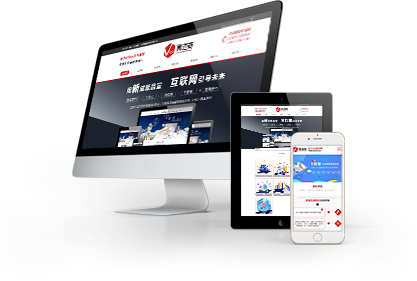在網(wǎng)站建設(shè)中,模板是非常重要的一部分,它決定了網(wǎng)站的外觀和用戶體驗(yàn)。但是,現(xiàn)成的模板往往無(wú)法完全滿足個(gè)性化需求,因此需要進(jìn)行自定義。下面
濟(jì)南做網(wǎng)站公司將介紹如何自定義模板以滿足個(gè)性化需求。
In website construction, templates are a very important part that determines the appearance and user experience of the website. However, ready-made templates often cannot fully meet personalized needs, so customization is necessary. Below, Jinan website company will introduce how to customize templates to meet personalized needs.
一、了解模板結(jié)構(gòu)
1、 Understand template structure
在進(jìn)行自定義之前,需要了解模板的結(jié)構(gòu)和組成部分。通常,一個(gè)模板包括以下幾個(gè)部分:
Before customizing, it is necessary to understand the structure and components of the template. Typically, a template consists of the following parts:
1.頭部:包括網(wǎng)站的標(biāo)題、Logo、導(dǎo)航欄等。
1. Header: includes the website's title, logo, navigation bar, etc.
2.主體:包括網(wǎng)站的內(nèi)容、布局、樣式等。
2. Main body: including website content, layout, style, etc.
3.側(cè)邊欄:包括網(wǎng)站的輔助功能、廣告等。
3. Sidebar: includes website accessibility features, advertisements, etc.
4.底部:包括網(wǎng)站的版權(quán)信息、友情鏈接等。
4. Bottom: includes website copyright information, friendly links, etc.
二、選擇合適的工具
2、 Choose the appropriate tool
在進(jìn)行自定義之前,需要選擇合適的工具。通常,可以使用以下幾種工具:
Before customizing, it is necessary to select the appropriate tool. Typically, the following tools can be used:
1.文本編輯器:可以使用文本編輯器進(jìn)行模板的修改和編輯,如Notepad++、SublimeText等。
1. Text editor: You can use a text editor to modify and edit templates, such as Notepad++, SublimeText, etc.
2.圖形編輯器:可以使用圖形編輯器進(jìn)行模板的設(shè)計(jì)和美化,如Photoshop、Sketch等。
2. Graph Editor: You can use a graph editor to design and beautify templates, such as Photoshop, Sketch, etc.
3.模板編輯器:可以使用模板編輯器進(jìn)行模板的修改和編輯,如Dreamweaver、Artisteer等。
3. Template Editor: You can use a template editor to modify and edit templates, such as Dreamweaver, Artisteer, etc.

三、在選擇好工具之后,可以開(kāi)始進(jìn)行自定義。具體步驟如下:
3、 After selecting the tool, customization can begin. The specific steps are as follows:
1.備份原始模板:在進(jìn)行自定義之前,需要備份原始模板,以防止修改出錯(cuò)。
1. Back up the original template: Before customization, it is necessary to back up the original template to prevent modification errors.
2.修改頭部:可以修改頭部的標(biāo)題、Logo、導(dǎo)航欄等,以滿足個(gè)性化需求。
2. Modify header: You can modify the header's title, logo, navigation bar, etc. to meet personalized needs.
3.修改主體:可以修改主體的內(nèi)容、布局、樣式等,以滿足個(gè)性化需求。
3. Modify the subject: You can modify the content, layout, style, etc. of the subject to meet personalized needs.
4.修改側(cè)邊欄:可以修改側(cè)邊欄的輔助功能、廣告等,以滿足個(gè)性化需求。
4. Modify the sidebar: You can modify the auxiliary functions, advertisements, etc. of the sidebar to meet personalized needs.
5.修改底部:可以修改底部的版權(quán)信息、友情鏈接等,以滿足個(gè)性化需求。
5. Modify bottom: You can modify the copyright information, friendship links, etc. at the bottom to meet personalized needs.
6.測(cè)試和優(yōu)化:在進(jìn)行自定義之后,需要進(jìn)行測(cè)試和優(yōu)化,以確保網(wǎng)站的質(zhì)量和穩(wěn)定性。
6. Testing and optimization: After customization, testing and optimization are required to ensure the quality and stability of the website.
在進(jìn)行自定義之前,需要了解模板的結(jié)構(gòu)和組成部分,選擇合適的工具,遵循規(guī)范,保持簡(jiǎn)潔,進(jìn)行測(cè)試和優(yōu)化。通過(guò)自定義模板,可以打造出獨(dú)具特色的網(wǎng)站,提高用戶體驗(yàn)和形象。更多相關(guān)事項(xiàng)就來(lái)我們網(wǎng)站
http://m.sun2007.cn咨詢!
Before customization, it is necessary to understand the structure and components of the template, select appropriate tools, follow specifications, maintain simplicity, and conduct testing and optimization. By customizing templates, unique websites can be created to enhance user experience and brand image. For more related matters, come to our website http://m.sun2007.cn consulting service


